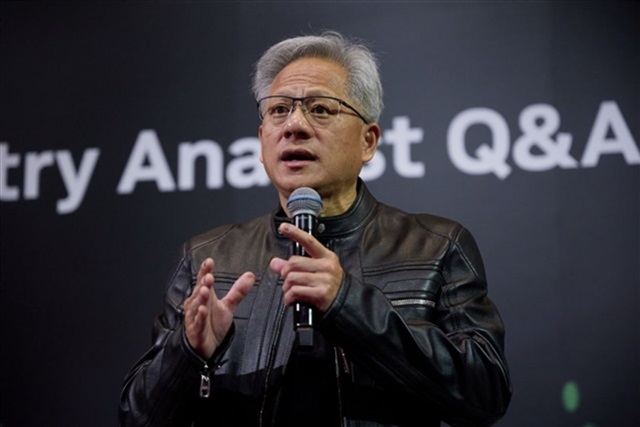| | | True, and if they successfully merge with quantum computing.... wow.
Nvidia's NVQLink breaks quantum computing barriers, proving that GPUs remain irreplaceable
Amanda Liang, Taipei; Kevin Wang, DIGITIMES Asia
Tuesday 4 November 2025 0
 Credit: DIGITIMES Credit: DIGITIMES
Nvidia CEO Jensen Huang stressed that the combination of quantum computing with AI will be crucial for driving developments in future technology, with industry consensus highlighting the need for directly connecting quantum computers to GPU-powered supercomputers to advance practical quantum computing.
At the recent Nvidia GTC in Washington, D.C., Huang noted that quantum computing is now entering a phase closely tied to high-performance computing (HPC) and AI, and Nvidia aims to define a standard architecture for hybrid quantum-classical computing through its NVQlink architecture, which will leverage its CUDA-Q software platform to enable collaborative computation across GPUs, CPUs, and quantum processing units (QPUs).
Nvidia has partnered with the US Department of Energy and more than 10 quantum computing firms to advance a new era of hybrid GPU + AI + quantum computing. According to Gene Munster, managing partner at semiconductor-focused investment firm Deepwater Asset Management, quantum technology was once seen as a challenge to Nvidia, yet the launch of NVQLink demonstrates Nvidia's pivotal role in the quantum ecosystem and confirms that GPUs remain irreplaceable in the near term.
According to engineering industry outlet Fierce Electronics, Nvidia is actively persuading the industry to embrace a future where quantum and classical computing converge. At the conference, Huang reiterated his bet that quantum computing will not replace classical computing, but rather integrate into a hybrid quantum supercomputing platform.
NVQLink offers thousands of data transfers per second, designed specifically to meet the speed and bandwidth demands of quantum error correction, while CUDA-Q serves as its core software platform, with support for real-time error correction and orchestrating complex hybrid computations between quantum and AI supercomputers. Seventeen quantum computing firms worldwide have already endorsed this architecture to form a robust ecosystem.
In addition to meeting current error correction needs in the hundreds of qubits, Huang stressed that the architecture is fully scalable to systems up to hundreds of thousands of qubits, providing a clear path for transitioning quantum computing from laboratory experiments to practical applications.
Building on Nvidia's existing NVLink GPU clustering technology, NVQLink provides enhanced connections between GPUs and can closely integrate GPUs with quantum processors. Nvidia has already successfully linked supercomputers with QuEra Computing's quantum system in a project in Japan, overcoming obstacles in conventional connectivity, which typically relied on Infiniband, PCI Express, or other interconnect technologies to link GPUs and QPUs.
According to The Wall Street Journal, even though Huang expressed skepticism about quantum practicality earlier this year, he affirmed Nvidia's active push to link quantum processors with GPU supercomputers as critical to future progress. In his GTC speech, Huang described NVQLink as "the Rosetta Stone connecting quantum and classical supercomputers — uniting them into a single, coherent system that marks the onset of the quantum-GPU computing era." By connecting quantum computers directly to GPU supercomputers, both GPUs and QPUs can work side by side to run the correct algorithms for key functions like error correction, AI calibration, and simulation, which will become the future of quantum computing.
Article edited by Jack Wu
digitimes.com |
|





 Credit: DIGITIMES
Credit: DIGITIMES